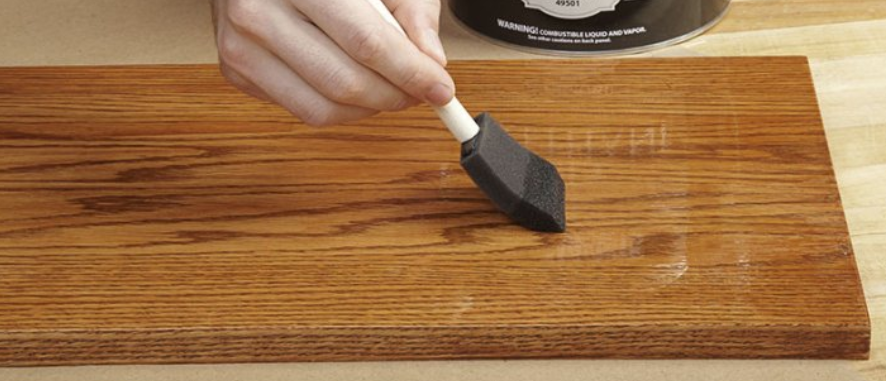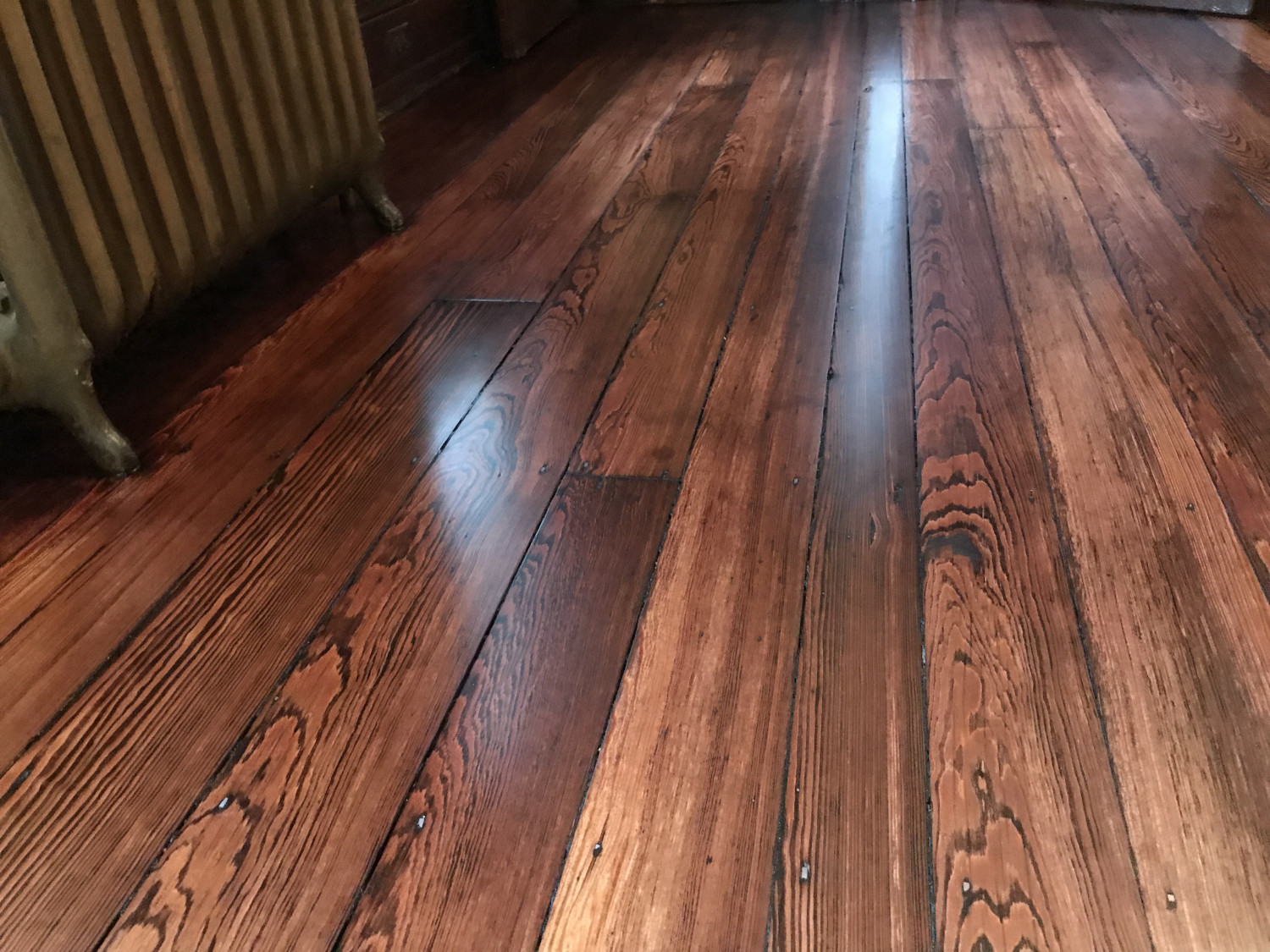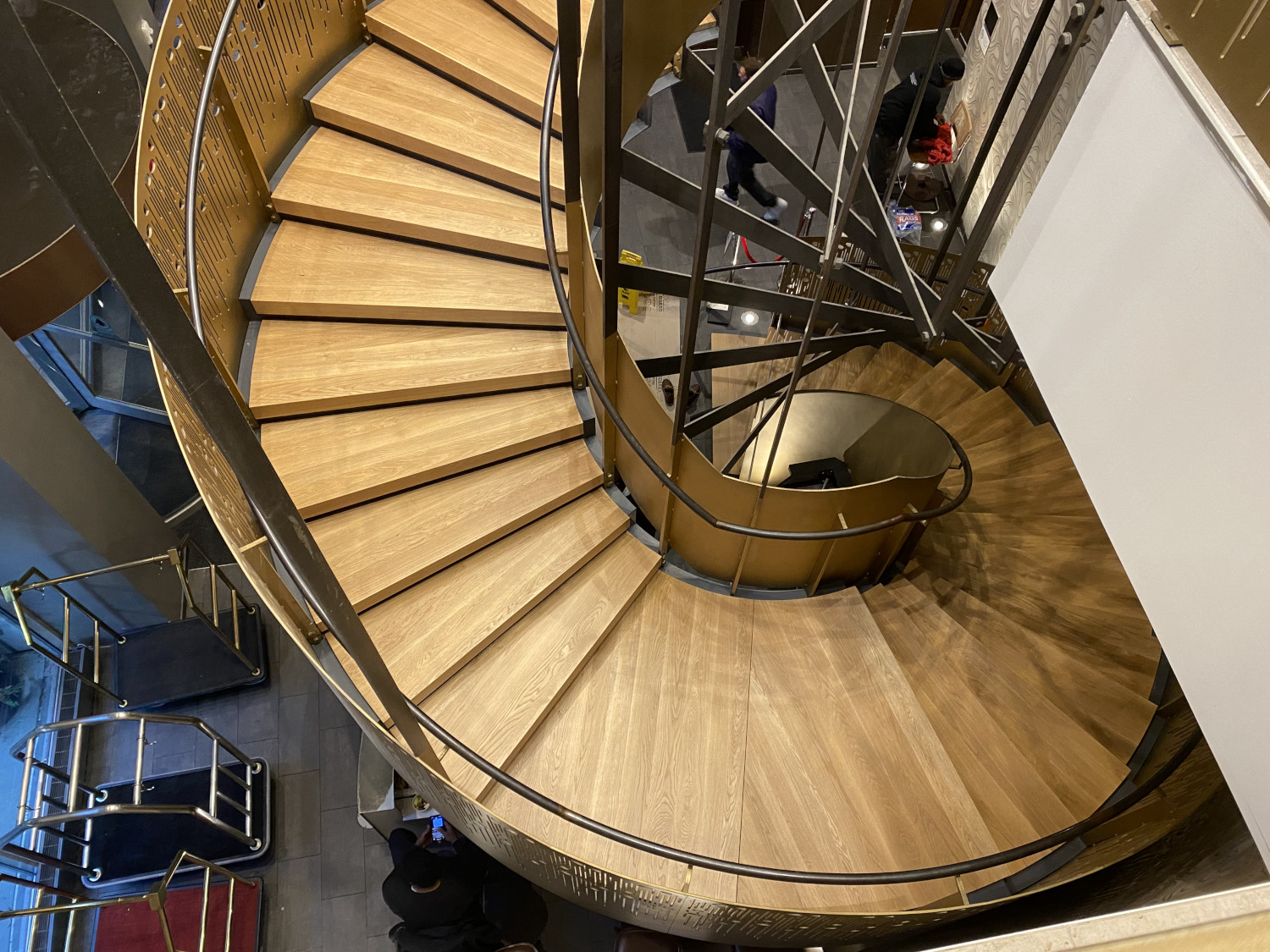How To Stain Hardwood Floors in Six Steps
Hardwood floor staining can be a rewarding DIY project for homeowners looking to enhance the aesthetic appeal of their space.
In this comprehensive guide, we will walk you through the process of staining hardwood floors and explore the different types of stains available.
Step 1: Prepare the surface.
Before diving into the floor staining process, preparing the hardwood surface is crucial. Start by cleaning the floors thoroughly to remove any dust, dirt, or debris. Sanding is the next step, as it helps smooth out imperfections and allows the stain to penetrate the wood evenly.
Step 2: Choose the right stain.

Selecting the right stain is a crucial decision that will significantly impact the final look of your hardwood floors. There are various types of stains available, each with its unique characteristics. Oil-based stains offer a rich and durable finish, water-based stains dry faster and emit fewer fumes, while gel stains provide a thicker consistency. Consider your preferences, the wood type, and the desired result.
Step 3: Test the stain.
Before applying the stain to the entire floor, testing it on a small, inconspicuous area is advisable. This allows you to preview the color and ensure it complements your space. Remember that wood reacts differently to stains, so testing is crucial in achieving the desired outcome.
Step 4: Apply the stain.
Once you’ve selected and tested the stain, it’s time to apply it to the hardwood floors. Use a brush, rag, or applicator pad to ensure an even and consistent application. Work in small sections, following the wood grain, and promptly wipe off any excess stain to prevent uneven coloring.
Step 5: Allow for plenty of drying time.
After applying the stain, allow sufficient drying time before moving furniture back into the space or walking on the floors. The wood floor drying time may vary depending on the type of stain used, so refer to the manufacturer’s instructions for guidance. Check out our blog on if fumes from hardwood floor finishes are bad for you if you have concerns.
Step 6: Seal the floors.

To protect the stained hardwood floors and enhance their longevity, it’s essential to seal them. Choose a clear polyurethane or another suitable sealant and apply it according to the manufacturer’s guidelines. This step adds a protective layer, guarding against scratches, spills, and wear. See our guide on wood floor sealants for more information.
Different Types of Hardwood Floor Stains
Hardwood floor wood floor stains can be categorized into three different types, as follows:
1. Oil-based stains
Oil-based wood floor stains are known for their depth of color and durability. They penetrate the wood, enhancing its natural beauty. However, they have a longer drying time and emit more fumes than water-based alternatives.
2. Water-based stains
Water-based wood floor stains dry faster and have a milder odor than oil-based options. They are an eco-friendly wood floor choice and provide a wide range of color options. However, they may not penetrate the wood as deeply as oil-based stains.
3. Gel stains
Gel stains have a thicker consistency, making them ideal for vertical surfaces and achieving a consistent finish. They are less prone to dripping, providing more control during application. Gel stains work well for achieving a uniform color on hardwood floors.
Floor Stain Colors

When it comes to staining hardwood floors, a vast palette of possibilities exists, allowing you to customize your space with hues that resonate with your unique style and preferences.
Here are some considerations:
Light and natural tones
Light and natural tones bring warmth and airiness, making them ideal for spaces that crave a bright and open feel. Light-colored stains often highlight the natural grains and patterns of the wood, creating a timeless and elegant aesthetic. The current popularity of white oak floors shows how timeless natural looking stains can be.
Medium-range hues
Medium-range hues encompass a broad selection of colors that balance light and dark. These versatile stains provide the flexibility to create various moods within a space. From warm honey tones to subdued amber shades, medium-range hues work well across multiple design styles.
Dark and rich shades
Dark and rich shades are the way to go for those seeking a bold and dramatic impact. Deep espresso, ebony, or mahogany stains bring a sense of luxury and sophistication to hardwood floors. Dark wood floor stains also have the advantage of concealing imperfections and providing a striking contrast to lighter-colored furnishings. For more info on dark wood floors check out our blog: The Top 5 Dark Wood Floors.
Gray and whitewashed finishes
Gray and whitewashed finishes are gaining popularity as modern, trendy choices. These contemporary stains offer a fresh, airy aesthetic, creating a clean, streamlined look. Gray stains range from cool, silvery tones to warm, taupe-like hues, providing versatility in achieving different atmospheres. On the other hand, whitewashed wood floor finishes impart a coastal or rustic charm, adding a touch of casual elegance to the space.
Custom blends and specialty colors
Beyond the standard color options, homeowners also have the option to create custom blends or choose specialty colors that cater to their unique vision. Some individuals may opt for a custom mix of stains to achieve a one-of-a-kind color that perfectly complements their decor. When looking for custom stains, it is best to call in an experienced professional wood floor refinishing team to help.
When to Hire a Pennsylvania Wood Floor Professional
While staining hardwood floors is a DIY-friendly project, there are instances where hiring a professional is advisable.
If your hardwood flooring consists of complex wood floor patterns or has extensive damage, you may want to hire a wood flooring expert to tackle the job. Furthermore, many homeowners don’t have the time to take on a wood floor staining project.
In the end, if you desire a perfect finish done right, bringing in a professional will ensure that your floors are handled with precision and expertise.
Contact the Philadelphia wood floor staining experts at Artisan Wood Floors today at (215) 515-7355 and ask for Steve!
Recent Hardwood Flooring Projects in Philadelphia & NJ




0 Comments